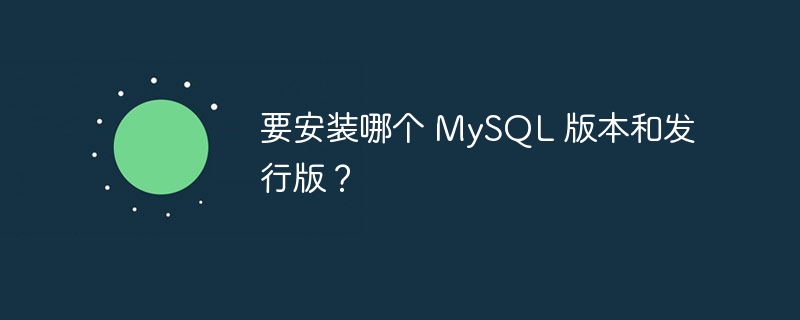Home >Database >Mysql Tutorial >Which MySQL version and distribution to install?
Which MySQL version and distribution to install?
- WBOYWBOYWBOYWBOYWBOYWBOYWBOYWBOYWBOYWBOYWBOYWBOYWBforward
- 2023-09-11 13:57:031412browse

Let us understand which version and distribution of MySQL need to be installed based on various properties -
Which version?
Determine whether you wish to install a development version or a GA (general release) version.
Development version has new features but is not recommended for use in production environments.
On the other hand, GA releases (also known as production releases or stable releases) are intended for production as they do not have any unclear features or features that are still in the experimental phase
Version number
When the version number is mysql-8.0.1-dmr, the number "8" represents the major version number. The second number (here 0) refers to the minor version number. A release series number is created when a major version number and a minor version number are combined. This serial number describes a stable feature set.
The third number (here 1) represents the version number of the release series. With every bug fixed, this number will increase. The latest version in the series is the best choice for download.
The version name may contain a suffix, such as "dmr" in the example above. This indicates the level of stability of the release. When publishing within a range of values, its stability level is indicated by a suffix. The higher the suffix, the higher the stability. There are many suffixes, some of them are discussed below -
Development Milestone Version
The term "dmr" means Development Milestone Version. The milestone model indicates that a small set of properly tested features are rolled out in that release.
The interface of a feature may change from one milestone to another. Some features may be removed and some features may be added. This depends on feedback from community members who try out features early in the release process.
Release Candidate
The term "rc" means "Release Candidate". They are considered stable and have passed all internal testing conducted by MySQL. New features may be introduced in "rc", but the focus is on fixing bugs and making a stable release in the series.
The above is the detailed content of Which MySQL version and distribution to install?. For more information, please follow other related articles on the PHP Chinese website!

